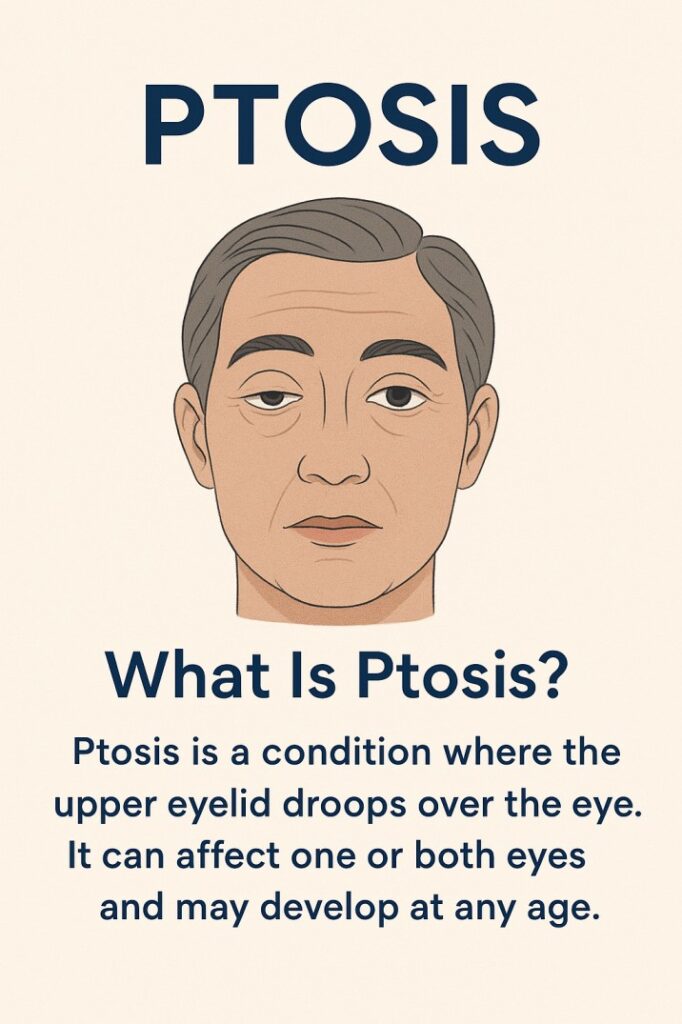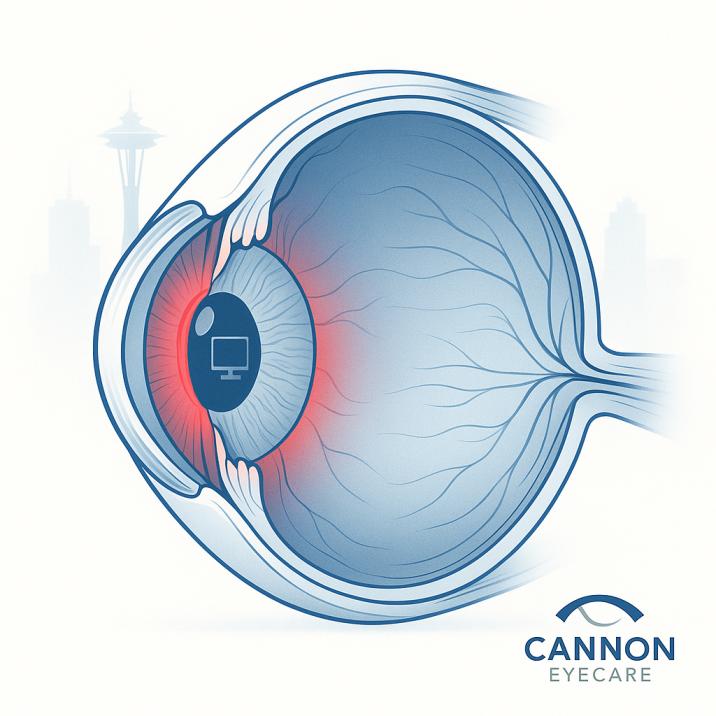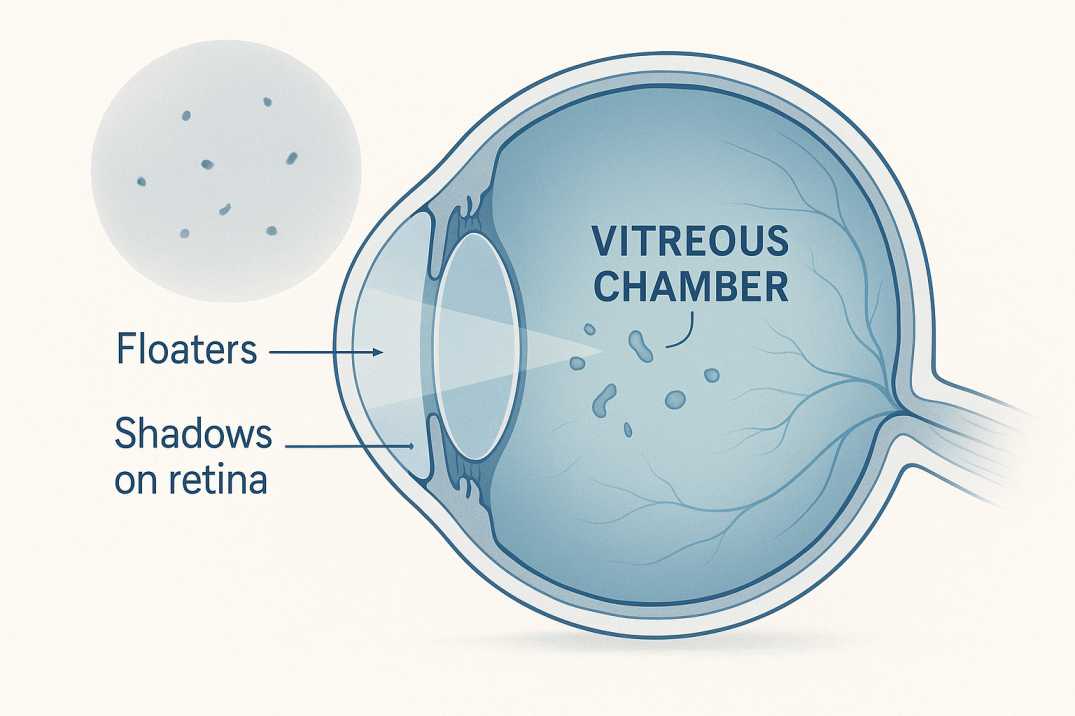Ptosis Explained: Causes, Symptoms, and Treatment Options
Introduction
Have you ever noticed that one or both of your eyelids seem to droop more than usual? You might be experiencing a common condition called ptosis (pronounced “TOE-sis”). Ptosis is the medical term for a drooping eyelid, and while it might seem like a minor cosmetic issue, it can sometimes affect your vision and overall quality of life.
In this guide, we’ll break down everything you need to know about ptosis—from what causes it, to how it’s diagnosed, and the best ways to treat it. We’ll answer the most common questions people ask online, share actionable tips, and give you insights from the latest research and expert opinions. Whether you’re worried about your own eyelid or just curious, this article will give you clear, trustworthy information you can use.
1. What Is Ptosis?

Ptosis is a condition where the upper eyelid droops over the eye. It can affect one or both eyes and may develop at any age—in infants (congenital ptosis) or adults (acquired ptosis). The drooping can be mild or severe, sometimes even blocking vision.
Key Facts:
-
Ptosis vs. Pseudoptosis: Not all drooping is true ptosis. Pseudoptosis can be caused by extra eyelid skin (dermatochalasis) or eyebrow sagging.
-
Common Concerns: Many people worry about appearance, but ptosis can also cause eye strain, headaches, and vision problems.
Expert Insight:
As an ophthalmologist, I see many patients concerned about ptosis. It’s important to distinguish between true ptosis and other causes of drooping eyelids to get the right treatment.
2. Types and Causes of Ptosis
Understanding the different types of ptosis helps clarify why it happens and how it can be treated.
Types of Ptosis:
-
Congenital Ptosis: Present at birth, often due to underdeveloped eyelid muscles.
-
Acquired Ptosis: Develops later in life, usually from aging, injury, or medical conditions.
Common Causes:
-
Aging: The most common cause in adults, that muscles and tendons stretch over time.
-
Injury: Trauma to the eye or eyelid can weaken muscles.
-
Neurological Conditions: Diseases like myasthenia gravis or Horner’s syndrome.
-
Medical Treatments: Some medications or surgeries (like cataract surgery) can cause temporary or permanent ptosis.
-
Other Causes: Tumors, infections, or underlying health issues.
Actionable Tip:
If you notice sudden or severe eyelid drooping, see an eye doctor right away. It could be a sign of a serious underlying condition.
3. Symptoms and How Ptosis Is Diagnosed
Ptosis isn’t just about appearance—it can cause real discomfort and vision problems.
Common Symptoms:
-
Drooping eyelid(s)
-
Eye fatigue or strain
-
Headaches from trying to lift the eyelid
-
Reduced field of vision (in severe cases)
-
Dry or watery eyes
Diagnosis:
-
Physical Exam: Your doctor will check your eyelid position and movement.
-
Vision Tests: To see if your vision is affected.
-
Special Tests: For underlying conditions (e.g., blood tests for myasthenia gravis).
Expert Insight:
Diagnosis is usually straightforward, but sometimes additional tests are needed to rule out serious causes.
4. Ptosis in Children: Special Considerations
Ptosis in children is usually congenital and can affect vision development if not treated.
What Parents Should Know:
-
Signs: One or both eyelids droop, the child may tilt their head back to see.
-
Risks: Can lead to amblyopia (lazy eye) or astigmatism.
-
Treatment: Surgery is often recommended to prevent vision problems.
Actionable Tip:
If you notice your child’s eyelid drooping, schedule an eye exam as soon as possible.
5. Treatment Options: Surgical and Non-Surgical
There are several ways to treat ptosis, depending on the cause and severity.
Non-Surgical Treatments:
-
Ptosis Crutches: Special glasses that hold the eyelid up.
-
Eye Drops: Newer treatments like Upneeq (oxymetazoline) can temporarily lift the eyelid.
-
Botox: Sometimes used for certain types of ptosis, but not always effective.
Surgical Treatments:
-
Levator Muscle Surgery: Tightens or reattaches the muscle that lifts the eyelid.
-
Frontalis Sling Surgery: Uses a sling to connect the eyelid to the forehead muscle (common in children or severe cases).
-
Recovery: Usually quick, with mild swelling and bruising.
Expert Insight:
Surgery is often the best long-term solution, but non-surgical options can help in mild cases or for those who can’t have surgery.
6. Living with Ptosis: Coping and Support
Ptosis can affect your confidence and daily life, but there are ways to manage it.
Psychological Impact:
-
Self-Esteem: Many people feel self-conscious about their appearance.
-
Support Groups: Online communities (like Reddit and Quora) offer advice and encouragement.
Practical Tips:
-
Use makeup to enhance your eyes.
-
Wear sunglasses to protect your eyes and boost confidence.
-
Join support groups for advice and emotional support.
Actionable Tip:
Don’t hesitate to talk to your doctor about how ptosis affects your life. They can offer resources and support.
Actionable Tips or Managing Ptosis
-
See an eye doctor if you notice eyelid drooping.
-
Ask about non-surgical options if you’re not ready for surgery.
-
Join online support groups for advice and encouragement.
-
Protect your eyes from the sun and wind with sunglasses.
-
Keep your eyes moist with artificial tears if needed.
Summary
Ptosis is a common but often misunderstood condition. Whether you’re dealing with a drooping eyelid yourself or caring for a child with ptosis, understanding the causes, symptoms, and treatment options is key. With the right care, most people can achieve good results and improve their quality of life.
FAQs
-
What is ptosis, and why does my eyelid droop?
-
How do I know if my drooping eyelid is serious?
-
Can ptosis go away on its own, or do I need treatment?
-
What are the best treatment options for ptosis?
-
Is ptosis surgery safe, and how long is recovery?
-
Can children have ptosis, and how does it affect them?
-
Will insurance cover ptosis surgery?
-
How is ptosis diagnosed?
-
Are there non-surgical ways to fix droopy eyelids?
-
What causes ptosis in older adults?
-
Can ptosis affect both eyes, or is it usually just one?
-
What should I do if my child’s eyelid droops?



